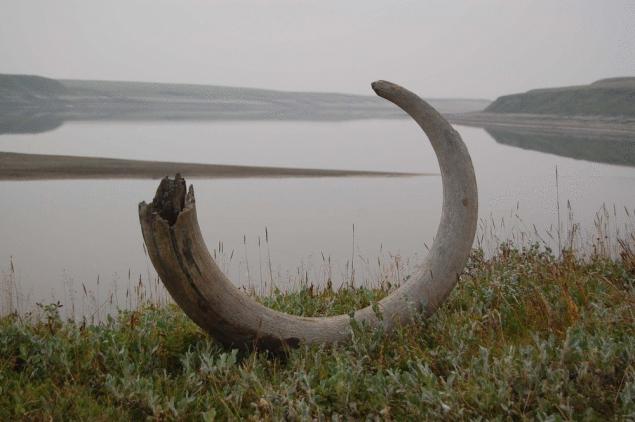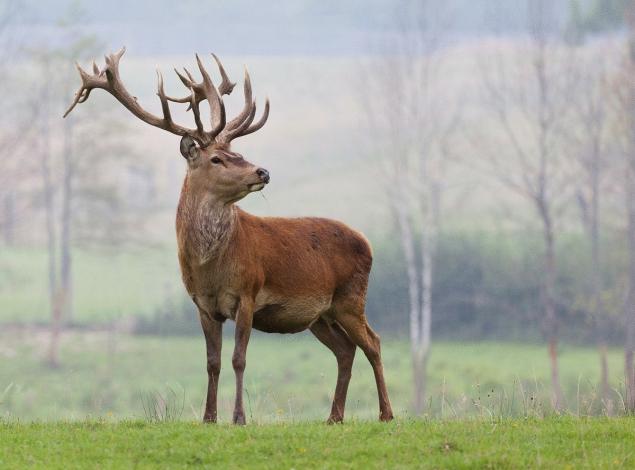Scientists said: the Woolly mammoths became extinct because of the colors
 Bashny.Net
Bashny.Net
Perhaps someone it will seem strange that, despite the large size and cold climate in which they lived, woolly mammoths ate Prairie grass. In reality that's not the weird part. The study of stomach contents and DNA from the frozen soil of the Arctic shows that the megafauna of the ice age fir forb — herbaceous flowering plants that are not grasses.
Moreover, the contents of the intestines of some large animal that lived in this region (mammoths, woolly rhinoceros), have shown that nutritional wild flowers was an important part of the diet of animals.

After careful analysis of the DNA of plants that are found in samples of permafrost from the Arctic 200 locations, Eske Willerslev from the University of Copenhagen (Denmark) and other members were able to recover 50 thousand years of history. First, the far North covers a rich forb.
But it was short-lived. "Approximately 20 thousand years ago at the peak of the ice age, began cold and dry, and kind of Forde's decreased, — says Mr. Willerslev. — No, he still dominated the ecosystem, but the diversity wished for the best."
See also: Found one of the ancient tombs of the Mayan ruler

"Killer" came to the end of the ice age, 12 thousand years ago. Grass and shrubs have replaced forb, and at the same time lost megafauna.
The hypothesis can also explain why reindeer were the only big animals of the ice age, preserved to our days. In the summer it eats grasses and sedges, and in winter is stuffed with nutrient-poor lichen. Forde's disappearance went unnoticed by him.
See also: Russians want to clone the woolly mammoth!

Source: /users/1005
Moreover, the contents of the intestines of some large animal that lived in this region (mammoths, woolly rhinoceros), have shown that nutritional wild flowers was an important part of the diet of animals.

After careful analysis of the DNA of plants that are found in samples of permafrost from the Arctic 200 locations, Eske Willerslev from the University of Copenhagen (Denmark) and other members were able to recover 50 thousand years of history. First, the far North covers a rich forb.
But it was short-lived. "Approximately 20 thousand years ago at the peak of the ice age, began cold and dry, and kind of Forde's decreased, — says Mr. Willerslev. — No, he still dominated the ecosystem, but the diversity wished for the best."
See also: Found one of the ancient tombs of the Mayan ruler

"Killer" came to the end of the ice age, 12 thousand years ago. Grass and shrubs have replaced forb, and at the same time lost megafauna.
The hypothesis can also explain why reindeer were the only big animals of the ice age, preserved to our days. In the summer it eats grasses and sedges, and in winter is stuffed with nutrient-poor lichen. Forde's disappearance went unnoticed by him.
See also: Russians want to clone the woolly mammoth!

Source: /users/1005
Tags
why mammoths became extinct
mammoths became extinct because of the colors
mammoth
photo
forb
ice age
flowering plants
DNA
animals
See also
Douglas Graham. Diet 80 Oct. 10 Audiobook.
17 of the most underrated medicinal plants
Healer of the Mogilev region
Parallel Worlds
Kilometer street - in blue color! (10 photos)
How to escape the heat: 5 cold soups that perfectly quench thirst and and hunger!
Animals that live in cold climates, have a large body size compared to living in warm
Doctors have discovered new properties of rose hips
Amazing Singapore garden: futuristic design and modern eco-technologies
Psoriasis: everything about possible types of this disease
















